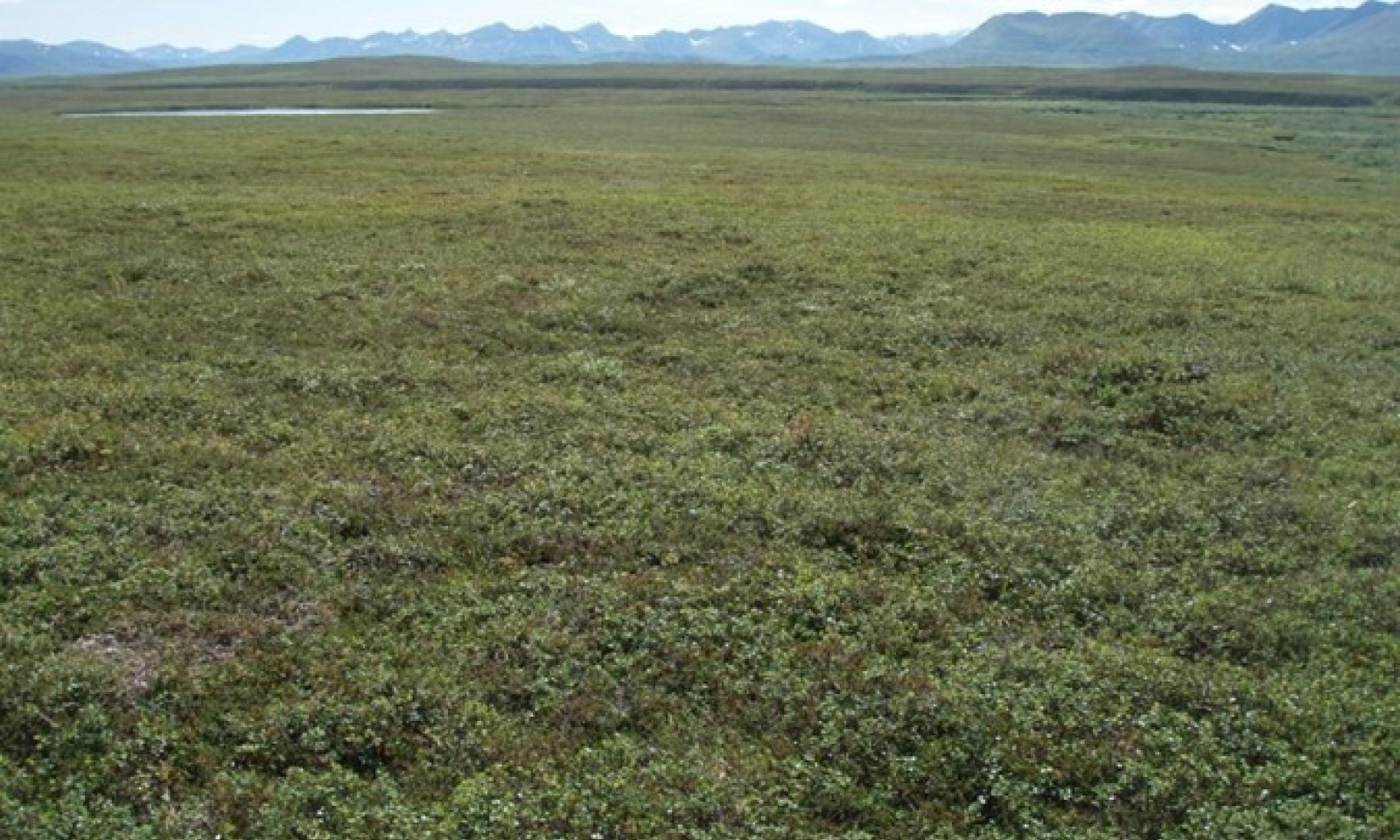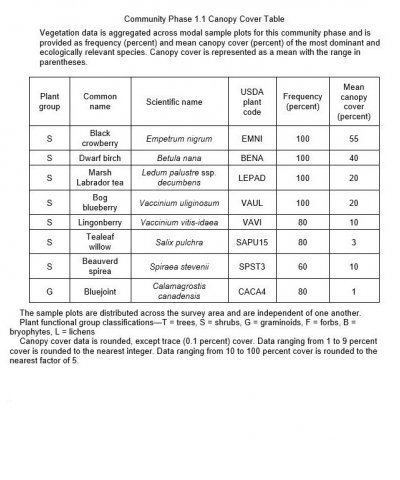

Natural Resources
Conservation Service
Ecological site R236XY106AK
Subarctic Dwarf Scrub Dry Loamy Slopes
Last updated: 2/13/2024
Accessed: 12/21/2025
General information
Provisional. A provisional ecological site description has undergone quality control and quality assurance review. It contains a working state and transition model and enough information to identify the ecological site.
MLRA notes
Major Land Resource Area (MLRA): 236X–Bristol Bay-Northern Alaska Peninsula Lowlands
The Bristol Bay-Northern Alaska Peninsula Lowland Major Land Resource Area (MLRA 236) is located in Western Alaska. This MLRA covers approximately 19,500 square miles and is defined by an expanse of nearly level to rolling lowlands, uplands and low to moderate hills bordered by long, mountain footslopes. Major rivers include the Egegik, Mulchatna, Naknek, Nushagak, and Wood River. MLRA 236 is in the zone of discontinuous permafrost. It is primarily in areas with finer textured soils on terraces, rolling uplands and footslopes. This MLRA was glaciated during the early to middle Pleistocene. Moraine and glaciofluvial deposits cover around sixty percent of the MLRA. Alluvium and coastal deposits make up a large portion of the remaining area (Kautz et al., 2012; USDA, 2006).
Climate patterns across this MLRA shift as one moves away from the coast. A maritime climate is prominent along the coast, while continental weather, commonly associated with Interior Alaska, is more influential inland. Across the MLRA, summers are general short and warm while winters are long and cold. Mean annual precipitation is 13 to 50 inches, with increased precipitation at higher elevations and areas away from the coast. Mean annual temperatures is between 30 and 36 degrees F (USDA, 2006).
The Bristol Bay-Northern Alaska Peninsula MLRA is principally undeveloped wilderness. Federally managed land includes parts of the Katmai and Aniakchak National Parks, and the Alaska Peninsula, Becharof, Togiak and Alaska Maritime National Wildlife Refuges. The MLRA is sparsely populated. Principal communities include Dillingham, Naknek, and King Salmon. Commercial fishing in Bristol Bay and the Bering Sea comprises a major part of economic activity in the MLRA. Other land uses include subsistence activities (fishing, hunting, and gathering) and sport hunting and fishing (USDA, 2006).
Ecological site concept
This ecological site is on hill shoulders and lower mountain slopes. Site elevation is typically between 450 and 1,850 feet above sea level. Slopes vary widely, from nearly level to steep.. Wind exposure, slope stability, soil acidity, low soil development/productivity, and andic properties favor the reference community of ericaceous shrubs. There is no determined disturbance regime, though fire may occur under rare, drier conditions.
The reference state supports one community. The reference plant community is characterized as a closed ericaceous scrubland (Viereck et al., 1992). It is composed of a dense mix of low and dwarf shrubs with sporadic graminoids and forbs throughout.
Associated sites
| F236XY139AK |
Boreal Woodland Loamy Rises F236XY139AK describes boreal forests on slopes. It abuts this site on some hill slopes. |
|---|---|
| R236XY151AK |
Subarctic Open Willow Loamy Plain Swales R236XY151AK describes swales on hills and plains. It is a relatively smaller landform feature that can be surrounded by R236XY106AK on the landscape. |
| R236XY105AK |
Subarctic Scrub Mosaic Gravelly Hillslopes R236Xy105AK describes alder hillslopes. It can be found on the same landscape as this site. Differences in site biotic and abiotic factors differentiate the vegetation between these sites. |
Similar sites
| R236XY132AK |
Subarctic Dwarf Scrub Dry Loamy Slopes Both sites support similar shrub and graminoid species in the reference plant community. R236XY132AK is described at higher elevations on mountains where it is subject to grazing pressure and wind exposure. These disturbance pressures are not associated with this site. Soil pH, parent material, and soil hydrology help differentiate these sites. |
|---|
Table 1. Dominant plant species
| Tree |
Not specified |
|---|---|
| Shrub |
(1) Empetrum nigrum |
| Herbaceous |
(1) Carex bigelowii |
Click on box and path labels to scroll to the respective text.

